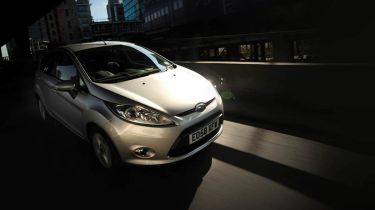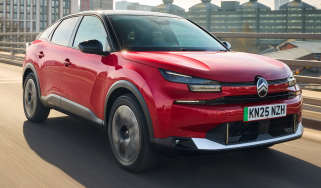Ford Fiesta 1.4 TDCi
The latest version of Britain’s favourite baby has finally hit the UK – and this diesel is the expected best-seller. Is it a winner?

Stylish, refined, frugal and eco-friendly – there’s no doubt that the new Fiesta is one of the most desirable small cars you can buy. The sole disappointments are the lack of cabin versatility and that sat-nav isn’t even an option. The 1.4-litre turbodiesel only has 67bhp, but it’s punchy, and overall it’s hard to fault the Fiesta, especially given all the improvements that have been made over the previous version.
It’s the small car that’s set to leave a big impression on Britain’s roads!
Ford’s stylish new Fiesta is the most eagerly anticipated supermini of 2008, and this week Auto Express became the first magazine to drive the diesel in the UK. We got behind the wheel of what will be the best-seller – the five-door 1.4-litre TDCi Zetec variant.
The arrival of the new model heralds some major styling changes, the most notable being the swept-back headlamps, sharply creased side skirts, high-mounted tail-lights and neat rear spoiler.
Inside, the cabin is a huge improvement over that of its predecessor, thanks to range-topping refinement. This is complemented by Mondeo-style dials and a centre console with an easy-to-use layout. At the top is an LCD display screen, which displays information about the stereo system and Bluetooth mobile phone connection. Unfortunately, however, the Fiesta still doesn’t have satellite navigation – it’s not even on the options list.
Used - available now

2023 Ford
Kuga
47,524 milesAutomaticPetrol2.5L
Cash £19,300
2020 Land Rover
Range Rover Velar
63,000 milesAutomaticDiesel3.0L
Cash £25,995
2020 BMW
X3
48,000 milesAutomaticDiesel2.0L
Cash £23,995
2020 BMW
X3
40,700 milesAutomaticDiesel3.0L
Cash £33,995However, there’s no doubt that the driving position has been improved. With a seat that’s lower than in previous models, it instils plenty of confidence. There’s a great view of the road ahead, and a real feeling of security.
In the back, the cabin offers plenty of leg and headroom, with enough space to sit three medium-size adult passengers. In terms of practicality, though, the Fiesta makes no significant advances. Despite its overall length being 35mm greater than that of the model it replaces, the newcomer hasn’t managed to adopt any of the clever seating systems used in rivals such as the Honda Jazz. As a result, it fails to make the most of its larger frame.
Both the 1.4 and 1.6-litre diesel variants boast the same emissions and consumption figures. For these units, combined economy is listed as 67.3mpg and CO2 output is 110g/km, which is sufficiently low for them to be eligible for annual road tax of only £35.
On British roads, the Fiesta excels. The 1.4 engine has 22bhp less than the 1.6, and that difference between the two outputs is particularly noticeable low in the rev range. In gear, though, it’s harder to distinguish any discrepancy between the two. And, as the latest Ford sees 40kg trimmed off the kerbweight, the 1.4-litre turbodiesel is still highly responsive. It churns out 67bhp, which is more than ample for nipping around town.
Travelling at higher speeds on the motorway, the Fiesta proves equally capable, and the slick five-speed gearbox helps it to deliver a superb driving experience. The diesel engine has a vocal note and produces a light rumble while idling, but the car’s improved sound insulation means that from inside the cabin it’s quieter than ever.
Turning into corners, the small Ford handles remarkably well thanks to its new, highly responsive and agile electric power-steering. It has minimum body roll, too. The ride comfort is excellent, coping with bumps and road imperfections with ease. In recent years, Ford has been chasing the competition in this sector. Now its best-ever Fiesta looks as if it’s heading straight to the top of the class.









